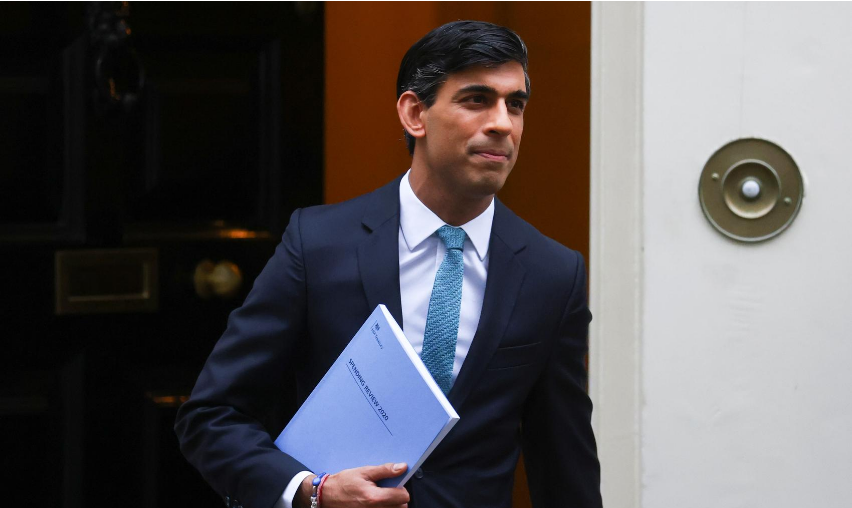
People walk past a take-out restaurant with an Eat Out to Help Out scheme poster in the window, as the outbreak of the coronavirus continues, in Luton, Britain August 6, 2020.
People walk past a take-out restaurant with an Eat Out to Help Out scheme poster in the window, as the outbreak of the coronavirus continues, in Luton, Britain August 6, 2020.
Britain's government spent almost twice as much as expected on encouraging people to eat in restaurants, cafes and pubs during what proved to be a temporary lull in COVID-19 cases in August.
Official figures released on Wednesday ahead of new spending plans from finance minister Rishi Sunak showed his Eat Out to Help Out scheme cost 849 million pounds ($1.13 billion), much more than an initial government estimate of 500 million pounds.
The government's Eat Out to Help Out initiative was designed to boost the economy after the first national lockdown, and allowed pubs and restaurants to offer heavily discounted meals on Mondays, Tuesdays and Wednesdays in August.
As of September 30, nearly 50,000 restaurants, pubs and cafes had joined the initiative, according to Her Majesty's Revenue and Customs (HMRC), 55 percent which claims were made by restaurants, pubs accounted for 28 percent.
The program paid up to half the cost of more than 160 million meals during August to boost one of the sectors hardest hit by the first coronavirus lockdown.
Critics have said it increased the risk of COVID-19 infections, which began to rise steeply again in September and ultimately led to a second round of lockdowns across Britain.
The scheme came before the announcement for England to shorten the quarantine time for incoming travelers starting December 15 as an attempt to boost the travelling and catering industry during the coming holiday season.

Britain's Chancellor of the Exchequer Rishi Sunak leaves Downing Street, in London, Britain, November 25, 2020. /Reuters
Britain's Chancellor of the Exchequer Rishi Sunak leaves Downing Street, in London, Britain, November 25, 2020. /Reuters
The financial cost of this scheme is small in the context of more than 200 billion pounds of government spending related to COVID-19 this year which looks set to drive the budget deficit up to 20 percent of annual economic output, a level not seen since World War II.
The most expensive single program, the Job Retention Scheme, has cost 43.0 billion pounds up to November 15, and supported 8.9 million jobs at its peak.
And the government eyes on spending more.
On Wednesday, British finance minister Rishi Sunak warned that the upcoming Office for Budget Responsibility's forecasts would "make for a sobering read."
"Cabinet was told the OBR forecasts will show the impact the coronavirus pandemic has had on our economy and they will make for a sobering read, showing the extent to which the economy has contracted and the scale of borrowing and debt levels," Johnson's Downing Street office said in a statement.
Sunak will announce extra investment to ease a backlog in the health system, counter a surge in unemployment and build new infrastructure in a one-year Spending Review that he is due to deliver to parliament around 1230 GMT.
Preliminary tax data released on Wednesday showed that 2.4 million jobs were still fully or partly furloughed on September 30, which the government estimated would rise to 2.7 million once all returns had been received.
Earlier this month Sunak extended the job support scheme until the end of March due to a resurgence in COVID-19 cases that thwarted his plan to rein in spending on the measure.
(With input from agencies)

